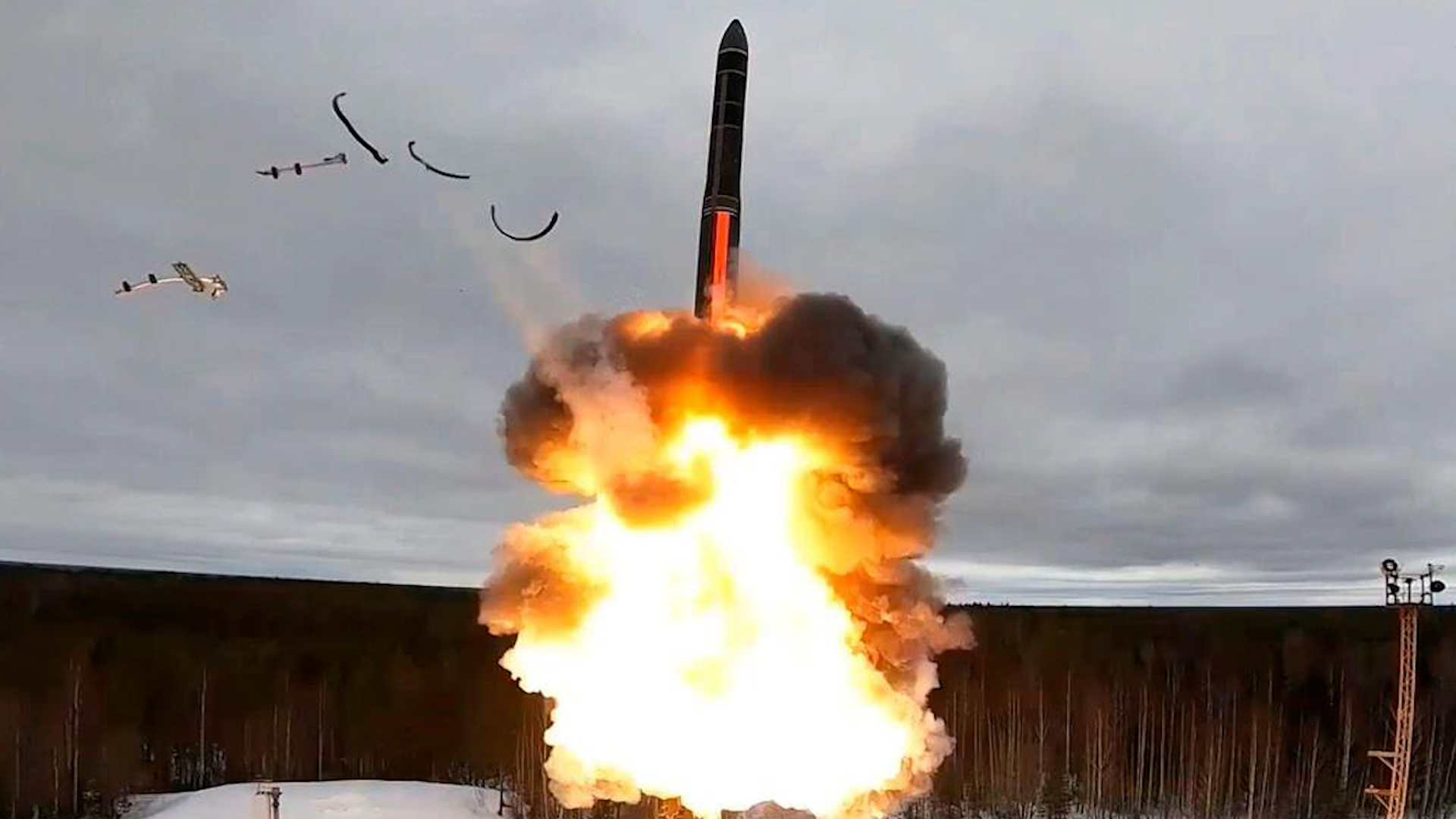
War in Ukraine sees more cruise and ballistic missiles used – but what are they?

The war in Ukraine has seen increasing use of cruise and ballistic missiles to target military installations and civilian infrastructure.
Both are deadly instruments of war, but their specific characteristics are perhaps not that well understood.
So what exactly is the difference between these two types of missile?
Cruise missiles
Cruise missiles are small, unmanned missiles that can be launched from the ground, sea or air and follow a pre-programmed flight path.
They are fitted with a small turbofan jet engine and typically travel at subsonic speeds of around 800kph (around 500mph).
Whereas ballistic missiles are more like rockets, cruise missiles are more akin to aircraft or drones.
They remain in the atmosphere for the duration of their flight and can fly as low as a few metres off the ground, making them very difficult to detect.
Cruise missiles use terrain-mapping, GPS and inertial guidance systems to steer them toward their target.
On some advanced cruise missiles, the operators can switch to a nose-mounted camera, enabling them to see what the missile is seeing.
They can then choose to manually guide the weapon to its target or abort the mission.
In Ukraine, British Storm Shadow cruise missiles, along with an identical French missile called the SCALP, have been in use since May 2023.
These have a range of 550km (340 miles), but the versions given to Kyiv are currently limited to 300km (180 miles).
One of the most spectacular uses of these was an attack on the headquarters of the Russian navy's Black Sea Fleet in Sevastopol last September, which reportedly killed 30 Russian officers.
Ballistic missiles
A ballistic missile follows a ballistic flightpath, travelling in a long parabolic arc rather than the low and straighter trajectory of a cruise missile.
They are powered by a rocket, or series of rockets, in stages and then follow an unpowered trajectory that arches upwards before descending towards its target.
Ballistic missiles can carry either nuclear or conventional warheads, and there are different classifications based on their range.
Short-range ballistic missiles can hit targets up to 1,000km away (620 miles) and if a nuclear warhead is fitted it's known as a tactical nuclear weapon.
These are the missiles that Russia has threatened to use in Ukraine.
There are also medium-range (1,000-3,000km/620-1,800 miles), intermediate-range (3,000-5,000km/1,800-3,000 miles) and intercontinental or strategic ballistic missiles known as ICBMs, which can hit targets over 5,500km (3,400 miles) away.
Some ICBMs can hit targets more than 10,000km away (6,000 miles), putting US cities within range of Russian long-range missiles.
Ballistic missiles have three stages of flight.
First comes a boost phase as the missile thrusts into the upper atmosphere. This phase is short and can last less than five minutes.
Once the rocket stops firing the missile continues climbing until it reaches the highest point of its trajectory, called the apogee.
This altitude depends on the trajectory of the missile, but longer-range missiles typically exit the Earth's atmosphere and enter outer space.
At this point, the missile can be travelling at up to 24,000kmh (15,000mph) – hypersonic speed.
The missile then enters its terminal phase as the warheads – which are now detached from the missile – plunge toward Earth at around 3,200kmh (2,000mph) before striking their target.
The US has 400 LGM-30G Minuteman III ballistic missiles in its arsenal based at Warren Air Force Base in Wyoming.
These have a range of more than 9,600km (6,000 miles) and reach speeds of Mach 23 (24,000kph/15,000mph) at burnout.
Russia's longest-range intercontinental ballistic missile is the R-36, known to Nato as the SS-18 Satan, which can hit targets up to 16,000km (10,000 miles) away.
In Ukraine, the Russians have made wide use of the 9K720 Iskander short-range ballistic missile.
These have a range of 500km (310 miles) and can carry a range of warheads including cluster munitions, fragmentation warheads and electronic pulse devices to destroy radars.
The Russians have also used the Kh-47M2 Kinzhal hypersonic air-launched ballistic missile with a range of 480km (300 miles) and a speed of Mach 10.









